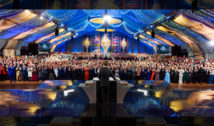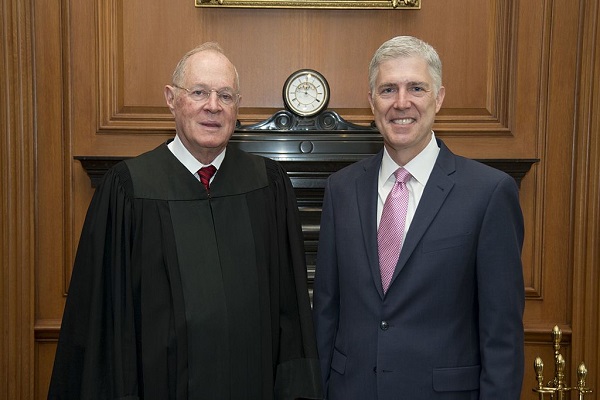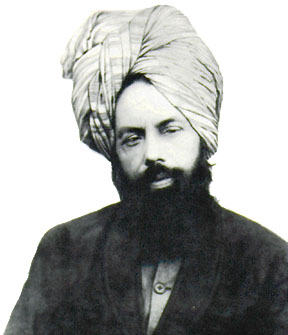
Grabbing a Cheeseburger: Enlightened Kashrut
- By Rabbi Michael Shevack --
- 03 May 2019 --

An enlightened approach to Jewish education begins by teaching not from the standpoint of religion
In my last article, we set basic educational guidelines for how to approach the contemporary Jew. First and foremost, is to understand and teach that Jews are primarily a People, with a long and proven set of behaviors and cultural norms that lead to a Good life – an “experience of God.” But, Judaism, as a “religion,” is largely an interpretation by the Rabbis of Blessed Memory and not necessarily in harmony with contemporary experiences.
Grabbing a Cheeseburger: Enlightened Kashrut[/tweetthis]
An enlightened approach to Jewish education begins by teaching not from the standpoint of religion, or religious law, but, first and foremost, from the standpoint of correct-lived life: correct from the Latin, co-regire, governing together. This is the foundation, from the wilderness experience forward, of living Life Under God, living in covenantal alignment to God’s Laws in nature as the world’s first historical nation.
In an enlightened approach to Jewish education, so-called “laws” that are recorded in scripture and interpreted are understood as intellectual framings of more basic “natural laws” – i.e., those necessary relationships that are built into the Order or “Commandment” by which earthly life is designed, organized and structured. Upon these, later interpretations and modifications are added, to adopt these principles for specific requirements and challenges.
Admittedly, all this is all very abstract, and quite hard to unpack, so it is best to illustrate this through one of the most prominent of Jewish identifiers: kashrut.
We start with secular life, lived according to laws-in-nature, not with religious laws. After all, our purpose here is to teach contemporary, secular Jews, not religious Jews.
Today, there is a huge movement of contemporary Jews (and all people actually) that are drawn to eating in a way that is remarkably identical to the core-construction of Torah kosher. They are tending to eat more vegetarian than animal based. They are tending to eat in harmony with the earth and its rhythms. They are tending to avoid food that has been grown through unfair labor practices, that, in principle, violate the Sabbath. They are avoiding any raising of animals or the slaughtering of animals that is cruel or reminiscent of “bloodthirsty.”
They tend to avoid disease, decay, detritus, dung, destruction, decay, dirt, in their foods, and often secular-inspection services can be every bit, and sometimes more rigid than a mashgiach. Indeed, all the Torah laws regarding “what is fitting” can be summed up by the avoidance of animals that might bring human beings in contact with these not-healthy (not Good, i.e., from God) foods. This represents a passage away from a de-generate people, such as the Canaanite, to one that is generate, such as the Hebrew – a moving away from embodying or incorporating the destructive forces within nature, towards the embodying or incorporating the constructive and flourishing forces of nature.
These days, contemporary Jews (and most people) also avoid desecration: For example, they often do not feel comfortable eating veal, where the baby animal is milk-fed and then tortured into tenderness.
They may eat shellfish, but it is completely cleaned and scrupulously hygienic. The kosher problem with these foods, after all, was because these creatures do not have alimentary canals that can be readily gutted, and therefore in their natural state be contaminated by feces.
One could say that there is a basic “fittingness” to food, which these abstracted categories represent. This is why the foundation to Torah-kosher is fundamentally universal! It is not just a “tribal law” but a human law. (Jews are human, aren’t we?)
However, in this era, we also notice something additionally quite compelling:
Should these contemporary Jews go to a physician’s office, and it turns out their bloodwork is off in terms of cholesterol or fatty-acids, the very first things these physicians do – Jew or non-Jew – is to reduce blood-soaked red meat and eliminate shellfish and bacon.
It is obvious that there is a core foundation to Torah kosher, beyond just considering it a mere “religious rule” for Jews alone.
It is also illuminating that in countries where there is relatively more consumption of shellfish and pork, these societies often tend to consume more olive oil and wine, which have the medicinal effects of offsetting the problems of shellfish and pork. Basic kosher has been adjusted but is fundamentally still present.
Food that is kosher – fitting the abstracted categories above – is a universal phenomenon! All human beings eat this way, in some variation, unless they have lost sight of their own health and well-being and have become degenerate.
So, it is OBVIOUS, that the natural tendency amongst secular Jews is, shall we say, directionally Kosher. Their need for strict “religious observance” has, to a great extent, become redundant or an unnecessary ritualizing, in an era where the general society has progressed and “become more Jewish,” so-to-speak.
We need to OWN this positive view of assimilation in contemporary synagogues. This phenomenon happens not because the “religious laws” are universal, but, because our religious formulations are based upon universal natural laws, in a more biological than philosophical, sense of that phrase “natural law.”
Now one might legitimately ask, what about the nuances of Jewish dietary culture that have existed for so long? Must we reduce the beauty of our previous stage of being a religion to mere biological-rationalism?
The answer is in part “yes”: Kashrut, disconnected from the living laws of creation, i.e., without a living connection to the Garden of Eden, so-to-speak, is overly formalized and has been made largely superseded by contemporary food production technology and other nutritional science. Kashrut has lost its true redemptive meaning, i.e., as a salvific teaching on earth, not just for the olam ha ba.
The answer is also “no”: Let me illustrate with the example of the cheeseburger, today’s contemporary icon of Jewish liberalness.
An enlightened kosher would never, as in the case of veal above, ever violate the mother-child bond between the animal and her calf, because it is a cruelty. To the contemporary Jew, who lives within a secular, Western, non-Jewish culture, who cares about their society, and contributes to it, it is incumbent upon them to make sure the society is transformed according to this Jewish traditional value. The animal-child must be properly cared for and separated non-cruelly from the nursing mother, and the mother-child relationship must be respected: one cannot de-speciate a bird, by eating the eggs and the mother simultaneously. For any contemporary Jew, enlightening the world with this principle is part of their covenantal purpose and responsibility!
However, if the ethical responsibility to sanctify the mother-child relationship is respected, the placing of cheese on top of a hamburger (let alone in Chicken Parmigiana) is not automatically an abomination of nature. As long as the correct relationship between the mother and the child is honored and safeguarded, the use of the milk, to flavor the meat, is not a violation.
However still – and here, this brings us back to the gift of tradition – the purpose of the Jewish culture, which transmitted through the “religious” perspective of the rabbis, is not just to keep us together, and to maintain our nation in the diaspora, but, also, to teach the world the very value system that we hold to be God’s Wisdom.
If a contemporary Jew follows the Kashrut guide and does not put cheese on the burger as a conscious manifestation to teach respect for the mother-child relationship, then it remains very valuable, and spiritually-significant cultural expression. It becomes a custom that distinguishes our teachings, or Torah, from others, and foments our unique Jewish understanding for the sake of demonstrating this to the entire world. It is not just ritual for ritual sake. It is not just artifact of a religious age. It can be purposeful and, indeed, important. And no liberal Jew should, in their modernist-arrogance, devalue, its purpose and beauty.
However, if the banning of cheese on a burger is done without the consciousness of God’s creation that is foundational, it is simply a “ritual,” and a seemingly arbitrary law. This is which is what contemporary, secular, scientific, spiritual Jews resist and reject.
Thus, in regard to cheeseburgers, there are two possible modes of cultural norms that can exist, one more generalized-secular and one more “religiously-secular,” and both are wonderful Jewish self-expressions in the thought-economy of our people. Both, however, are foundationally secular, based on the design of Life on earth, and are only secondarily religious.
For contemporary Jews who do not maintain the fixity of the law, nor the absolute authority of rabbinic interpretation, kashrut remains “from God,” because it is teaches these natural laws. Such natural laws are not so much built upon some Divine Reason floating in the sky as a substitute for discounted religious-revelation – but, are real natural laws, how species and life were designed. That’s why, if we shirk from it, for instance, by eating fecally-contaminated food, we will, over time, experience lack-of-Goodness, or said, in more religious terms, “God’s curse.” The recent deaths due to E. Coli contamination (the common bacteria in feces) proves the point.
Reason is not some philosophical-principle-of-unity, as the early Reformers sometimes presented it. “Reason” is the organizational-structure of human experience, perceived and actualized, for the purpose of experiencing Good on a very real earth, with very real laws governing it. Indeed, the very notion of “rational” must be re-defined here beyond the catholic-modernist philosophy of the 19th century.
Understanding how to present Kashut in an enlightened, secular, scientific, spiritual age provides us with an excellent example, which, if generalized, can help us develop teaching techniques for contemporary Jews that draw upon the best of tradition, without losing the best of modernism. It can help us do this without dividing our minds into “secular” and “religious,” “Jew” and “Gentile,” “science” and “faith,” all of which violate the Unity of Knowledge, the Unity of Humankind, and of course, That Unity, which is The One God, Adonai Echad.
Teaching contemporary Jews in this enlightened way allows for something marvelous to occur: EXCITEMENT in contemporary Judaism.
The Jew – contemporary and non-religious – can truly know him/herself as “covenanted.” The Jew returns to being the root of Western civilization. And now Western civilization becomes healed through the continual witness of the Jew.
Now the purpose of the preservation of our people is maintained, without the force-feeding of strict religionism, or the denial and demonization of secular life as an instrument of “mere assimilation,” to be feared!
Quite the contrary, this enlightened approach to teaching allows Jews to be the herald of an outreach to draw more and more of the un-churched, people who are looking for a “way of Life” that brings their life purpose and meaning, no matter what their background.
Can today’s Judaism be a conversionary movement? It already is. More than 50 percent of new Jews come from non-Jews. But, until now, we have failed to identify a compelling way to handle this challenging, but I believe evolutionary phenomenon.
The basic structure of thinking here is applicable to many other “sacred cows” within our people’s culture, such as circumcision, which we will speak about next.



















